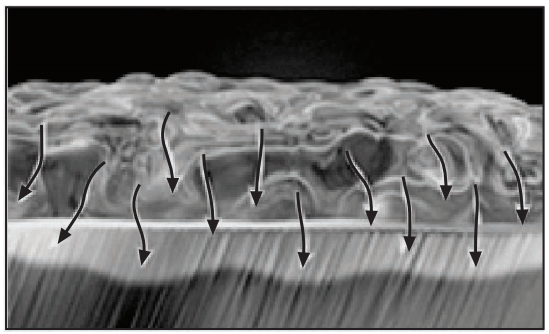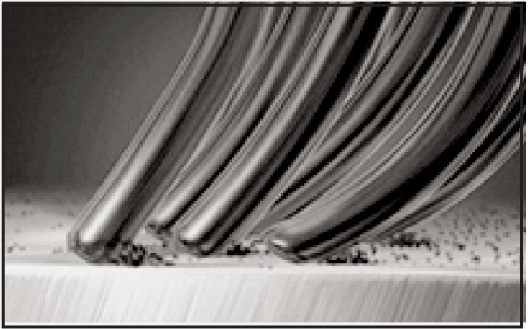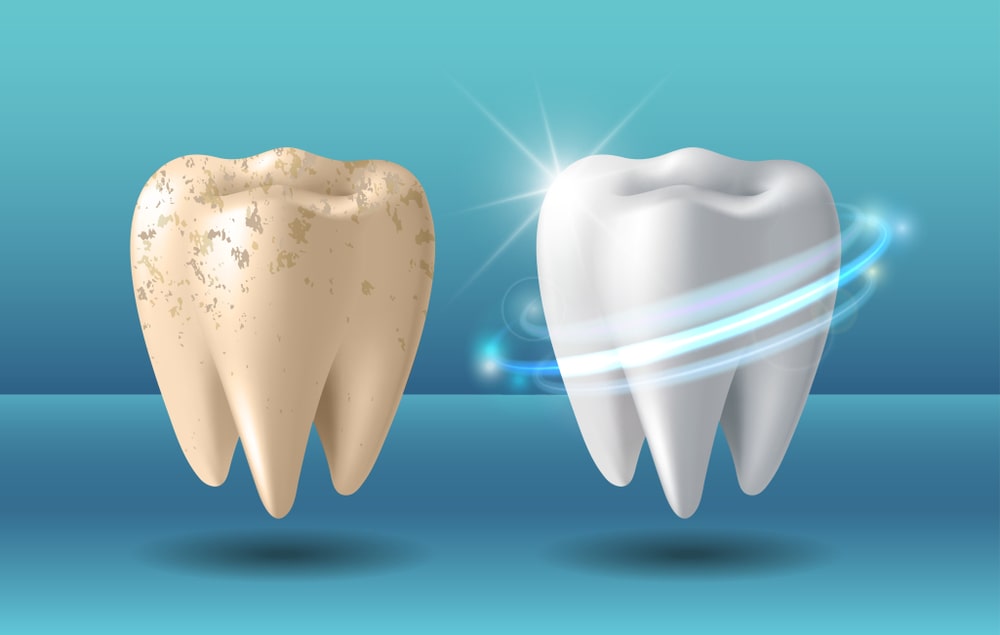Teeth Whitening: There are many ways to whiten the teeth–from whitening toothpaste and other products that can remove many surface stains for very little cost, to light-activated whitening techniques in a dentist’s office. All whitening techniques work in one of two ways:
Bleaching procedures change the natural tooth color, usually anywhere from five to seven shades brighter. In-office (chairside) whitening and at-home (tray) whitening both rely on bleaching. Bleaches contain an active ingredient, most often carbamide peroxide or hydrogen peroxide in concentrations of 10-22%, which helps to remove both deep and surface stains.

There are significant cost differences between different bleaching procedures:
- A light-activated whitening session in a dentist’s office, sometimes called chairside bleaching, results in instantly and often dramatically whiter teeth. However, after a year or so of eating and drinking normally (coffee, tea, soft drinks), the teeth become slightly discolored again and develop new stains.
- A custom mouthpiece created by the dentist for in-home bleaching is to be typically worn for several hours a day or overnight for two weeks. On the reappearance of new staining, the mouthpiece is worn again for a night or two to take the stains off.
- Over-the-counter products for whitening teeth (those found in a drugstore) include boil and bite tray application, whitening gels applied with a brush, whitening pens, and whitening strips.
Non-bleaching procedures work by physical and/or chemical action to help to remove surface stains. All toothpaste relies on mild abrasion to remove surface stains between dental visits.
Whitening toothpaste has special chemical or polishing agents.

These toothpaste typically contain more abrasive ingredients, such as silica, which scrub the surface of the teeth. The cleaning/whitening performance in a dentifrice product can be controlled by using dental silica, or a blended combination of silicas. The toothpaste market is highly segmented with products customized to meet the needs of specific customer segments. Formulators design toothpaste products to deliver targeted performance using industry-standard metrics for cleaning (Pellicle Cleaning Ratio) and abrasion (Relative Dentin Abrasion). Formulators choose a cleaning silica system to meet the desired toothpaste performance. Generally, performance is targeted to specific Pellicle Cleaning Ratio (PCR) and Relative Dentin Abrasion (RDA) ranges. The RDA values tend to increase with greater PCR. The absolute concentration of all cleaning silicas is important to achieve PCR/RDA targets and desired mouth-feel. (Often higher silica concentrations lead to a better mouthfeel.) Zeodent® 103 high cleaning silica can be used alone or as a “booster” in conjunction with standard cleaning silicas to target higher cleaning/whitening performance. For maximum cleaning, it can be used at 10 to 20 percent loadings (higher, but acceptable RDA levels) with thickener silica to improve the mouth feel. For lower RDA targets, Zeodent® 113 at ~20 percent loading or Zeodent® 124 at ~10 percent loading are usually better cleaning silica choices because of the higher loading level. These help to reduce the level of gum necessary to obtain an acceptable rheological profile for toothpaste. Clear gel toothpaste is a special case where the optical properties of the silica must be taken into consideration along with meeting the PCR/RDA targets. Zeodent 113 and Zeodent 124 cleaning silicas deliver greater optical clarity than Zeodent 103 high cleaning silica.
Professional cleaning by a dentist or hygienist also uses abrasion and polishing to remove most external staining caused by food and tobacco. Everyone responds differently to different whitening procedures. Some people respond well to whitening toothpaste, while people with gray teeth or other serious discoloration may require porcelain veneers or bonding.
Once a whitening treatment has been completed, the following steps must be taken to maintain it:
- Avoid stain-causing foods and beverages – coffee, tea, wine, sports drinks, hard candy, berries, and tomato sauce.
- Use a straw while drinking beverages, to keep stain-causing dyes away from the teeth.
- Quit smoking as smoking tobacco can cause teeth to become discoloured.
Sometimes after whitening treatments, teeth can be sensitive. To overcome this the options are:
- Use of sensitivity toothpaste: Toothpaste is formulated with ingredients such as potassium nitrate to relieve the pain associated with tooth sensitivity.
- Chew gum: Chewing gum enhances salivation that helps counter sensitivity and the act of chewing may distract people from the pain.
- Avoid whitening: Stop using whitening products for a while.
Make sure you also check our other amazing Article on : Tooth Discolouration
